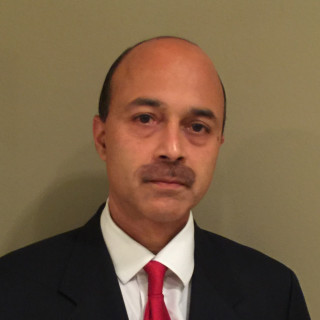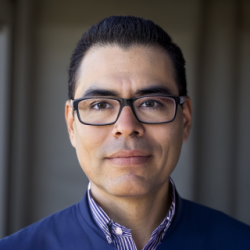The CheckMate-274 trial established the role of adjuvant nivolumab for high-risk muscle invasive urothelial carcinoma (MIUC) (≥ypT3 or N+ without neoadjuvant chemotherapy [NAC], ≥ypT2 or N+ if post-NAC). With a median follow-up of 36.1 months, the disease-free survival (DFS) improved with nivolumab versus placebo with a hazard ratio (HR) 0.63, with a HR 0.58 in those following prior NAC and 0.69 without prior NAC. For overall survival (OS), a secondary endpoint, HRs favored nivolumab in all patients with MIUC (HR 0.70) demonstrating a more robust increment of HR 0.48 in those with tumor PD-L1 ≥1%. Adjuvant pembrolizumab might also become available in the clinic based on the positive results of improved DFS (HR 0.73) in the AMBASSADOR trial. The role of tumor-informed circulating tumor (ct)-DNA to select high-risk patients for adjuvant immune checkpoint inhibitor therapy and guide escalation versus de-escalation of therapy is emerging, but validation in phase 3 trials is awaited (IMvigor011, MODERN). The latest positive phase 3 perioperative trial is NIAGARA, which demonstrated that the addition of perioperative durvalumab (four cycles preoperatively and eight cycles postoperatively) with neoadjuvant cisplatin-based chemotherapy improves both event-free survival (EFS) and OS in muscle-invasive bladder cancer (MIBC). The EFS (HR 0.68; P<0.001) and OS (HR 0.75; P=0.01) improved with perioperative durvalumab and the pathologic complete response (pCR) also improved (37% vs 28%). Patients derived greater EFS and OS benefit in both pCR (EFS HR 0.58; OS HR 0.72) and non-pCR (EFS HR 0.77; OS HR 0.84) groups. Immune adverse events (AEs) were reported in 21% of patients in the durvalumab arm with only 3% exhibiting grade 3/4 immune AEs.
Therefore, with MIBC, do we offer all patients neoadjuvant plus adjuvant durvalumab combined with neoadjuvant cisplatin-based chemotherapy, or should we proceed with neoadjuvant cisplatin-based chemotherapy alone and deliver adjuvant PD1 inhibition informed by pathologic response? There are a few points to consider:
1) In the NIAGARA trial there was an early separation of the EFS curve even before the time of radical cystectomy. Indeed, the checkmate 901 trial also demonstrated an early benefit when nivolumab was combined with gemcitabine-cisplatin (GC) for metastatic disease. These data would support the perioperative durvalumab approach for most patients.
2) However, there are clearly patients who perform quite well with cisplatin-based chemotherapy alone in the neoadjuvant setting. Patients who enjoy pCR, approximately 35% of patients may not require adjuvant therapy given excellent outcomes. Therefore, such patients may be spared the unnecessary toxicities of immune checkpoint inhibitor therapy and still enjoy excellent long-term outcomes. However, the optimal selection of patients likely to enjoy pCR is unclear. One somatic alteration in the gene ERCC2, which has actually been validated to predict pCR, occurs in a small minority of patients. While accurate predictive biomarkers remain unknown for most patients who enjoy pCR on neoadjuvant cisplatin-based chemotherapy, could those with ERCC2 alterations pursue neoadjuvant cisplatin-based chemotherapy alone in the approximately 10% of patients who harbor them, and could dose-dense MVAC provide a potentially more effective neoadjuvant chemotherapy option? The absence of definitive data renders these discussions challenging in the clinic.
3) While in cisplatin-ineligible patients the adjuvant PD1 inhibition approach would be reasonable if fulfilling the high-risk criteria, the NIAGARA trial did involve a subset of approximately 20% of patients who were traditionally considered cisplatin-ineligible with an estimated GFR of 40 to <60 mL/min who received split-dose cisplatin plus gemcitabine alone or with durvalumab who also appeared to benefit.
Thus, the discussion of perioperative chemotherapy with a patient has become vastly more complicated and informed decision making is clearly necessary. Overall, shared decision-making is necessary after discussion of these issues with the patient and balancing the risks and potential benefits of both the perioperative immune checkpoint inhibitor approach or an adjuvant immune checkpoint inhibitor approach informed by the pathologic remission status following neoadjuvant cisplatin-based chemotherapy.
Dr. Sonpavde has received grants from EMD Serono, Jazz Therapeutics, Bayer, Sumitomo Pharma, Blue Earth Diagnostics, and Exelixis. He has received consulting fees or honorarium from EMD Serono, BMS, Merck, Seattle Genetics, Astellas, Janssen, Bicycle Therapeutics, Pfizer, Gilead, Scholar Rock, Eli Lilly, Loxo Oncology, Vial, Aktis, Daiichi-Sankyo, Syapse, Merck, Servier, Syncorp, and Ellipses. He has also received support for travel from BMS and Astellas. He has received payment for writings from Uptodate, Practice Update, Onviv, DAVA Oncology, and PrecisCa. He has also received payment for lectures from Seagen, Gilead, Natera, Exelixis, Janssen, Astellas, Bayer, Aveo, Pfizer, and Merck. He has also received support for CME-certified speaking from Research to Practice, PeerView Institute, Ideology Health, and IBCU/Grand Rounds in Urology.
Illustration by Joe Lee







